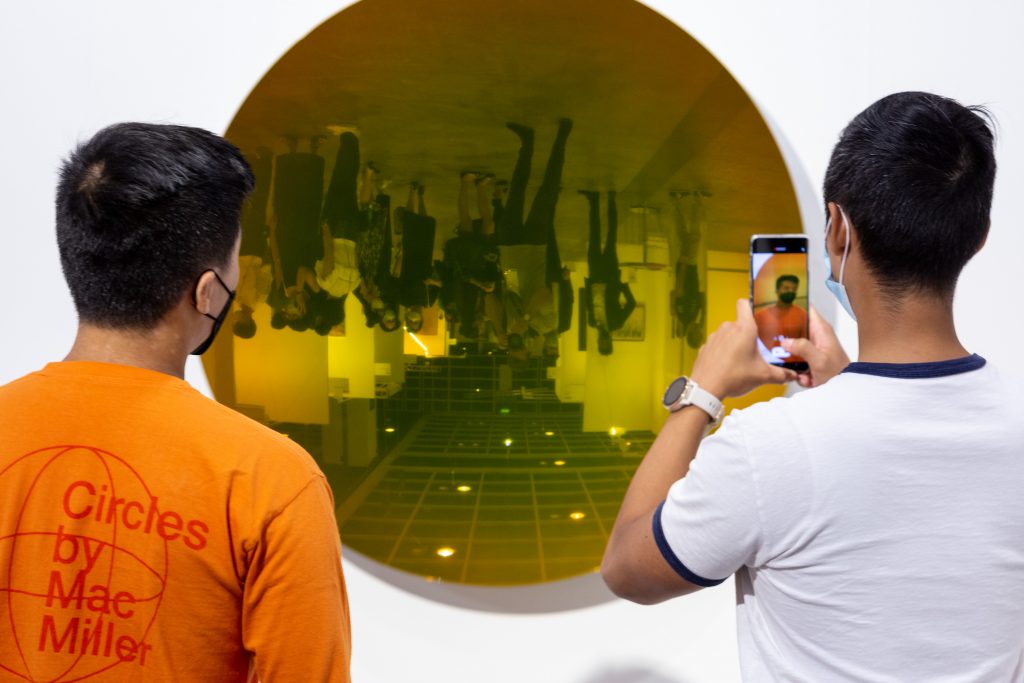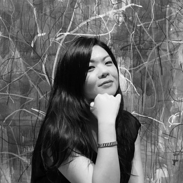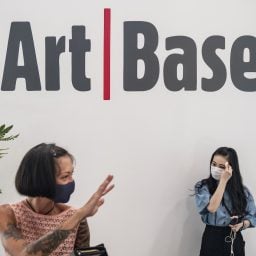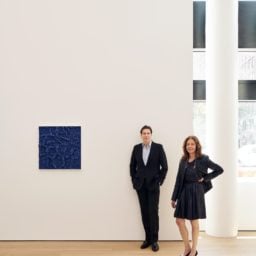Inside a dark room at Art Basel Hong Kong, Emi Eu, the director of Singapore’s STPI—Creative Workshop & Gallery, was giving a group of eight guests a detailed introduction to Korean artist Haegue Yang’s works on paper.
Then, when the session was over—poof!—she disappeared.
Eu was part of a futuristic experiment that enabled overseas dealers stymied by travel restrictions and the mandated up-to-21-day quarantine to beam into the fair using hologram technology. This was one of many new experiments in evidence during the first physical Art Basel fair since the pandemic.
While dealers from abroad made efforts to be present virtually, the inaugural Art Basel Live: Hong Kong broadcast the show to audiences around the globe and the latest iteration of Art Basel’s online viewing room sought to encourage remote transactions. Local galleries, meanwhile, experimented with NFTs and cryptocurrency, seemingly undeterred by the recent market crash.
“This notion of hybrid show, both strong on a physical and [digital] level, is a way forward,” Art Basel’s global director Marc Spiegler—zooming in from Switzerland—said at an online media conference.
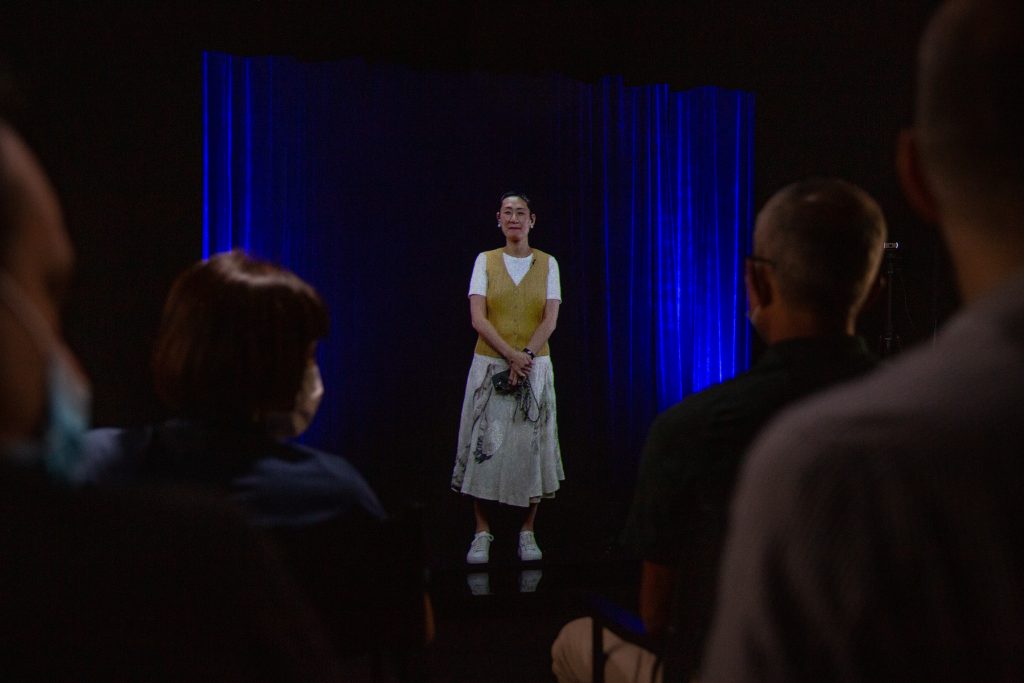
A hologram of a dealer beaming into Art Basel Hong Kong 2021. Photo: ARHT Media
Return of the Art Week
This year’s fair, held at the Hong Kong Convention and Exhibition Center, featured just 104 galleries from 23 countries; more than half of those were participating via satellite booths (or, as we like to call them, “ghost booths”), a first-time gambit for dealers who were unable to attend in person. In another first, Art Basel was held under the same roof as satellite fair Art Central, which is normally under a tent in the nearby Tamar Park.
The first two VIP preview days saw friends and colleagues enthusiastically reuniting—with strict crowd control measures and mask requirements in place, of course. Because fewer than half of the typical number of galleries were participating, the fair occupied only the first floor of the convention center. Homegrown dealers such as Hanart TZ Gallery, de Sarthe, and Gallery Exit were allocated prime spots by the entrances.
Many Hong Kong galleries reported strong sales early in the fair. De Sarthe sold Andrew Luk’s large-scale installation Haunted, Salvaged (2020–21) to K11 Art Foundation for an undisclosed price. Blindspot Gallery sold works by Lam Tung-pang, Jiang Zhi, Jiang Pengyi, Sarah Lai, Un Cheng, Trevor Yeung, and Sin Wai Kin for prices ranging from $5,000 to $70,000. 10 Chancery Lane sold five works by Laurent Martin “Lo” and several by Frog King Kwok, priced around $10,000 each. Gallery Exit sold half its booth after the first VIP day, including works by Oscar Chan Yik Long and Stephen Wong Chun Hei. Galerie du Monde sold out of works by Taiwanese artist Wu Chi-Tsung.
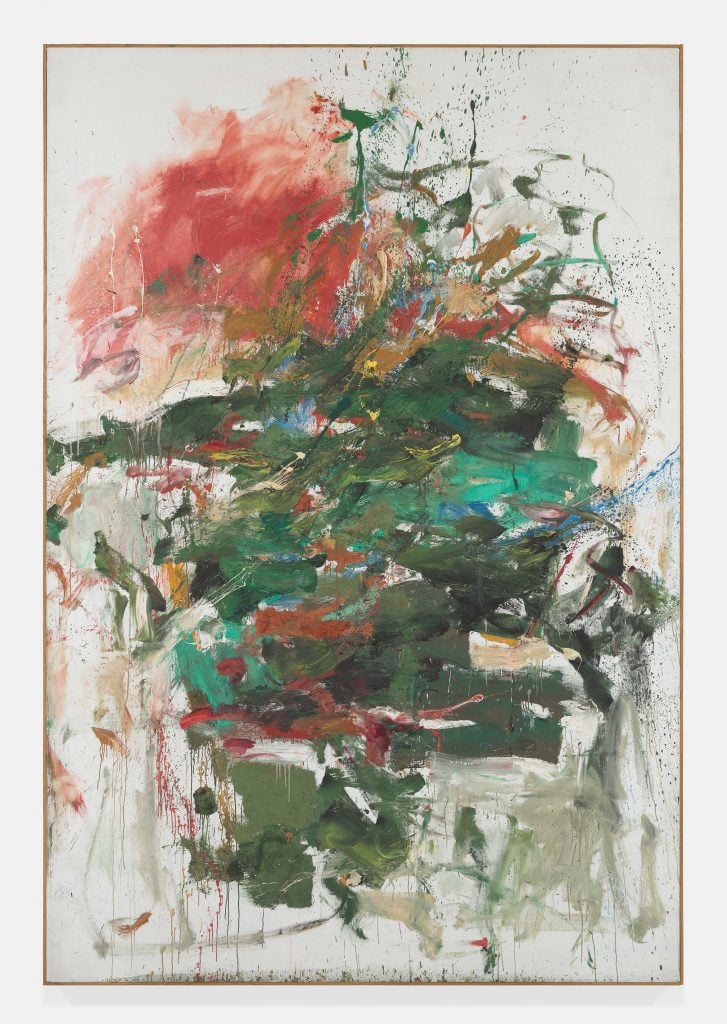
Joan Mitchell, 12 Hawks at 3 O’Clock (1960). © Estate of Joan Mitchell
International galleries that have a presence in Hong Kong reported multimillion-dollar sales. Hauser & Wirth sold George Condo’s Blues in A flat (2021) for $1.75 million and Haunted by Demons (2020) for $800,000. Rashid Johnson’s Untitled Broken Crowd (2021) sold to the Long Museum in Shanghai for $595,000. Lehmann Maupin sold a Lari Pittman work to a private collection in Malaysia for $300,000 and another to a museum in China for $225,000 and David Zwirner sold out of paintings by Belgian painter Harold Ancart. Three of the four works in the booth went to an Asian art museum for $300,000 each.
Lévy Gorvy had perhaps the priciest sale of the day, offloading a prime painting by Joan Mitchell, 12 Hawks at 3 O’Clock (ca. 1962), which came with an asking price of $19.5 million. (That exceeds Mitchell’s public auction record, which stands at $16.6 million.) The same painting sold at Christie’s in 2018 for $14 million.
International galleries relying on satellite booth operations also reported satisfactory results. First-time exhibitor Proyectos Monclova, which participated from Mexico City, sold three works by Gabriel de la Mora for $25,000 each.
Hologram Dealers
Both Spiegler and the fair’s Asia director Adeline Ooi said it was “surreal” enough to stage Art Basel Hong Kong during this pandemic year. Even more surreal, however, was the first-time presence of life-size hologram versions of overseas gallerists.
The program was only available to dealers located in three cities—Singapore, Geneva, and New York—who could pop into studios outfitted with tech from ARHT Media Inc., a leading company in digital content development. (Dealers did not have to pay an additional fee to participate in the offering.)
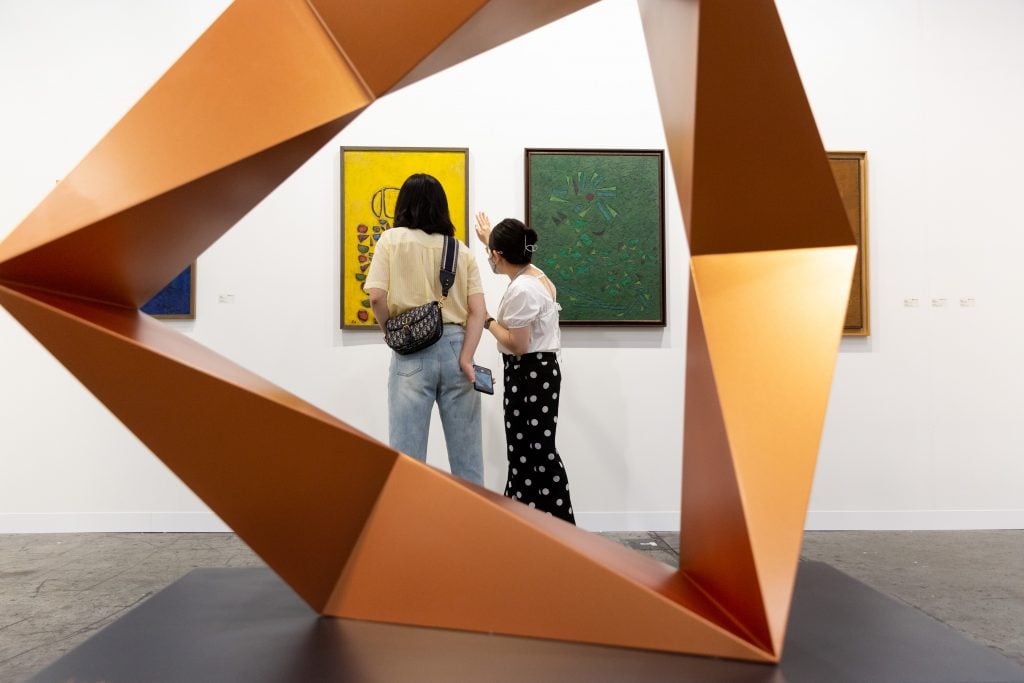
Asia Art Center in the Insights section at Art Basel Hong Kong. © Art Basel
The handful of fairgoers who attended trial sessions said they were amazed by the state-of-art technology. How it could be scaled for a bigger crowd and more gallerists remains to be seen.
International dealers who were unable to participate in the hologram trial attended virtually via iPad or computer, keeping their eyes on the screen to make sure they could catch the attention of collectors walking by.
Yvonne Zhou of first-time exhibitor Karma attended via iPad from New York. Despite the 12-hour time difference, she said the experience “has been fun.” “I had meaningful and productive conversations, meanwhile some visitors thought I was an interactive artwork,” Zhou told Artnet News. “I even talked with a collector who was also an iPad dialing in from a different city in Asia.”
Even remotely, she managed to sell work by artists including Reggie Burrows Hodges, Henni Alftan, and Marley Freeman. “It is more important to see art in person than to see dealers in person,” she said.

Zhang Yanzi’s “Mask Series” at Ora-Ora, for which the gallery will accept payment in cryptocurrency. © Art Basel
Alternative Currency
Local galleries delved into new tech in their own way. Ora-Ora presented the first NFT works at Art Basel, by Peng Jian and Cindy Ng, to coincide with the launch of its own marketplace on OpenSea. Art-tech startup the Screens Guru also debuted an NFT for sale at local institution 1a space’s booth.
Chinese antique dealers Andy Hei and Warren Cheng—both showing as part of a collaboration between the antiques fair Fine Art Asia and Art Basel—launched two NFT collectibles: of a dagger from the Warring States Period (770–221 B.C.) and a crescent blade from the Qing dynasty. Fifteen of the 30 editions of each weapon had already sold on OpenSea for just under $1,500 each as of Thursday night. The real objects were on display at the pavilion.
Hei, also the director of Fine Art Asia, said the idea was inspired by his son’s passion for collecting weapons in computer games a few years ago. “In hindsight, those were already NFTs,” he said. Only those who have bought the NFT versions of the objects will be eligible to buy the IRL weapons. “We can try to attract younger clients this way,” Cheng said.

It’s a whole new world. Sign at de Sarthe’s booth at Art Basel Hong Kong. Photo: Vivienne Chow
Other local galleries, including Ora-Ora and de Sarthe, are accepting cryptocurrency as payment for the first time. Ora-Ora accepted Bitcoin and Ether for the “Mask Series” by Zhang Yanzi (and had received a number of technical questions about the mechanics of paying this way in the fair’s opening days), while de Sarthe took payment in cryptocurrency for works in its contemporary program, usually priced $50,000 or under.
“As a gallery that represents artists using the internet as a creative tool, it is natural for us to accept cryptocurrencies as payment,” Pascal de Sarthe told Artnet News. “The majority of crypto spenders are between 26 and 45 years old and many of them are just entering the art world. The transfer or art and ideas will be seamless as crypto payments.”
Art Basel Hong Kong runs until Sunday, May 23.
